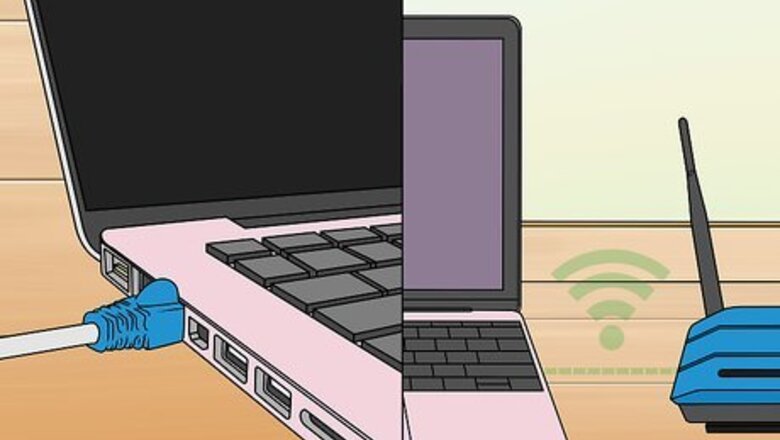
views
X
Research source
A free Speedify account allows you to use up to 5GB of data per month. An unlimited account costs $8.99 per month, or $49.99 per year.
Using Speedify on Windows and Mac
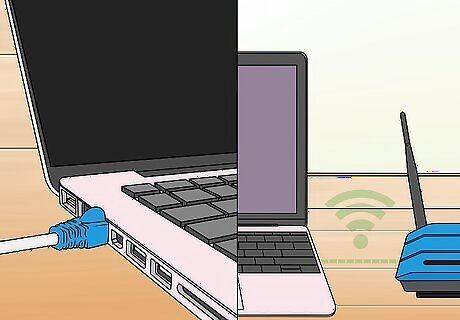
Connect to your primary internet connection. If you are using a wired connection, connect an Ethernet cable from the Ethernet port on your computer to an open LAN port on your modem or router. If you are using a Wi-Fi connection, click the Wi-Fi icon (the icon with three arching lines) on the right side in the menu bar on Mac, or taskbar on Windows. Then select your Wi-Fi network and enter your wireless passkey.
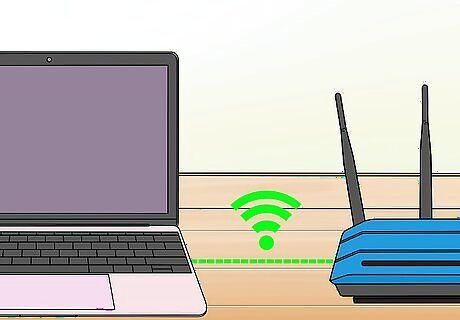
Connect a secondary internet connection. If you are connecting a wired and wireless connection, you can easily do so by connecting to your Wi-Fi network and then connecting to your computer using an Ethernet port on your computer. However, if you are connecting two wired or two wireless connections, or your computer doesn't have an Ethernet port, you will likely need to purchase a USB Ethernet adapter to connect a second Ethernet cable or a wireless USB adapter to connect to a second Wi-Fi connection. If you are using a Mac, you will need to install additional drivers to be able to use a wireless USB adapter. Make sure the adapter you purchase is compatible with MacOS. You will not be able to use a USB ethernet adapter.
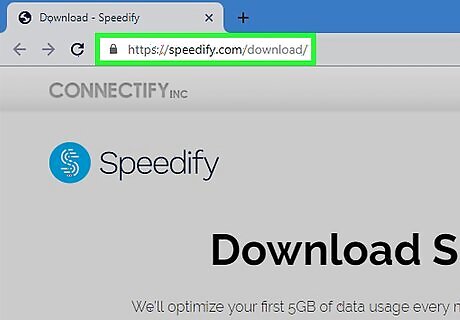
Navigate to https://speedify.com/download in a web browser. You can use any web browser on PC or Mac.
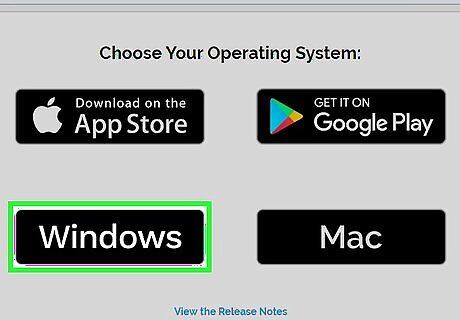
Click Windows or Mac. If you are a Windows user, click Windows to download the Windows version of Speedify. If you are a Mac user, click Mac to download the Mac version of Speedify. Speedify requires Windows 7 or later, or MacOS 10.10 or later.
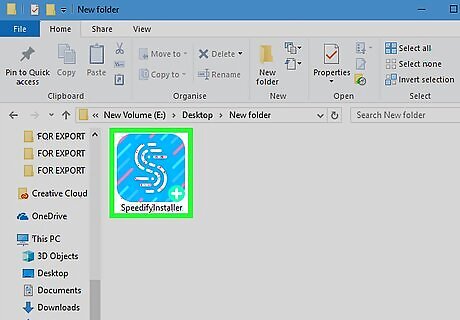
Double-click the install file. After Speedify is done downloading, click "SpeedifyInstaller.exe" on Windows, or "SpeedifyInstaller.dmg" on Mac. By default, you can find your downloaded files in your "Downloads" folder, or within your web browser. This installs Speedify.
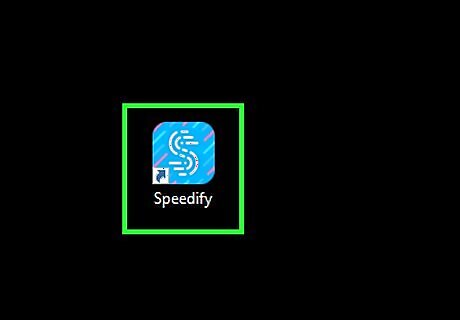
Open Speedify. After you install Speedify, the app will open automatically. If you need to open Speedify, click the Windows Start menu in the lower-left corner on Windows, or the icon that resembles a magnifying glass in the upper-right corner on Mac. Type speedify, and then click the Speedify app. It has a blue icon with an "S".
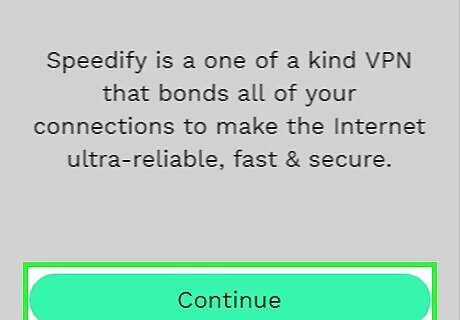
Click Continue. It's the green button at the bottom of the screen.
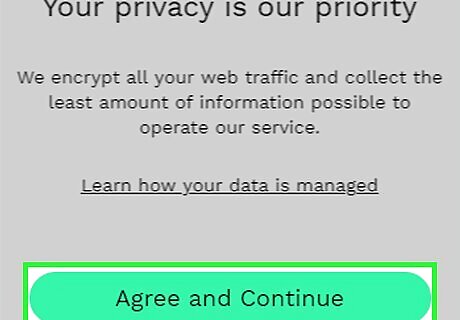
Click Agree and Continue. It's the green button in the center of the page. This indicates that you agree to the privacy terms.
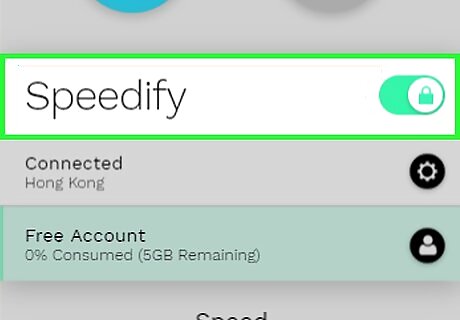
Click the toggle switch next to Speedify. Once Speedify opens, both your connections will be listed at the top. If the toggle switch next to Speedify is green, both networks are bonding. A free Speedify account allows you to use up to 5GB of data per month. An unlimited plan costs $14.99 a month, or $89.99 per year.
Using Speedify on Mobile Devices
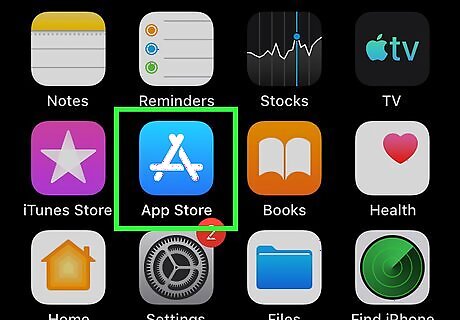
Open the Google Play Store Android Google Play or App Store iPhone App Store Icon. If you are using Android, tap the Google Play Store icon to open it. It has an icon that resembles a colorful triangle. If you are using an iPhone or iPad, tap the blue icon with a white "A" to open the App Store.

Tap the Search tab (iPhone and iPad only). If you are using an iPhone or iPad, tap the search tab in the lower-right corner to display the search page.
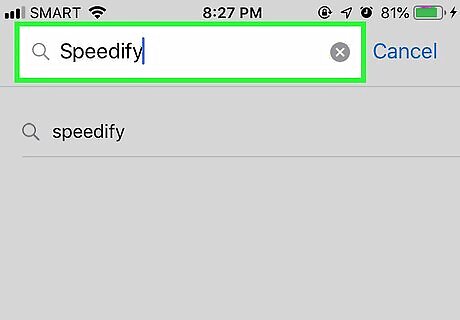
Type Speedify in the search bar. On Android, the Search bar is at the top of the Google Play Store. On iPhone and iPad, it's under the Search tab. Tap the search bar and then use the on-screen keyboard to search "Speedify". This displays a list of search results.
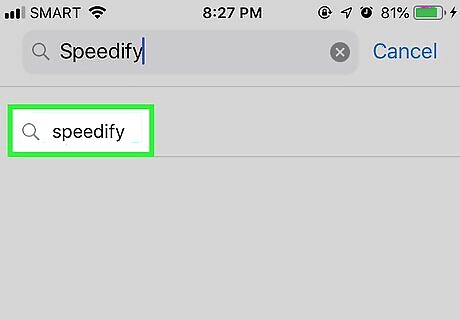
Tap Speedify in the search results. This displays the app info page in the Google Play Store or a list of similar apps in the App Store.
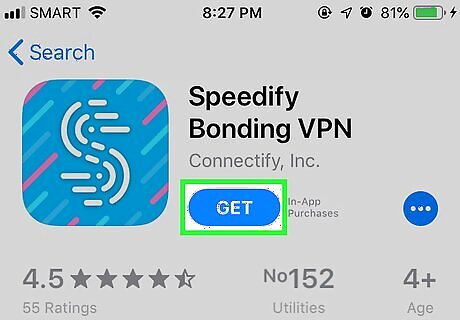
Tap Install or GET. In the Google Play Store, tap Install to install Speedify. On iPhone and iPad, tap GET next to Speedify to install it. It has a blue icon that a white "S".
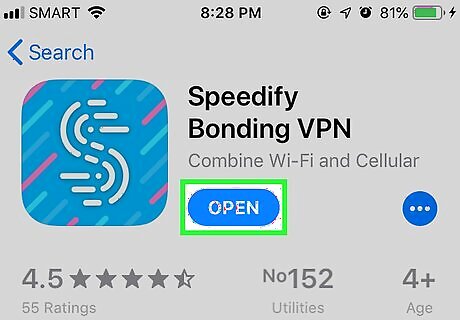
Open Speedify. After Speedify is finished installing, you can tap the blue icon with a "S" on your home screen or apps menu to open Speedify, or tap Open next to it in the App Store or Google Play Store.
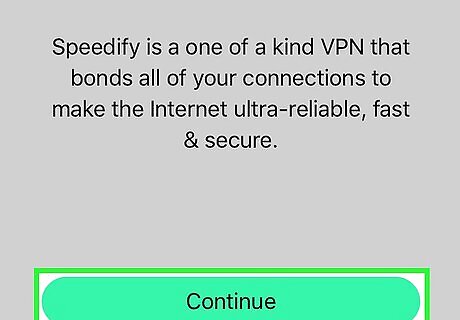
Tap Continue. It's the green button at the bottom of the screen.
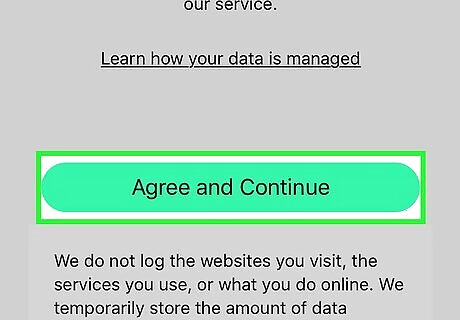
Tap Agree and Continue. It's the green button in the center of the page. This indicates that you agree to the privacy policy.
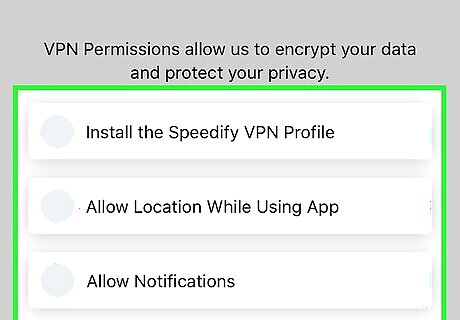
Tap the white setup buttons and then tap Allow. There are a features Speedify needs access to on your phone. You will need to allow locations on both iPhone and Android devices. On Android, you will need to enable phone state permissions. On iPhone and iPad, you will need to install the Speedify VPN profile and allow notifications. Tap the buttons on the screen, and then tap Allow to enable these features.
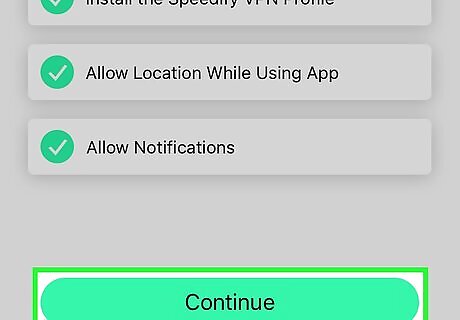
Tap Continue. After you have enabled all the needed features, you can tap the green button at the bottom of the screen that says Continue.
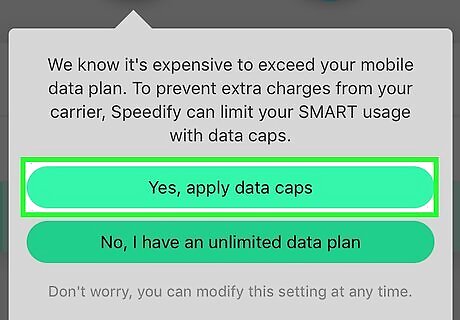
Tap Yes, apply data caps, or No, I have an unlimited data plan. Speedify on mobile devices allows you to use both your mobile data and your wi-fi connection at the same time. If you do not have an unlimited data plan, tap Yes, apply data caps to apply a monthly 2 gb limit on your mobile data connection. Then tap Got it to continue. If you have an unlimited data plan, tap No, I have an unlimited data plan to allow unlimited data on your mobile connection.
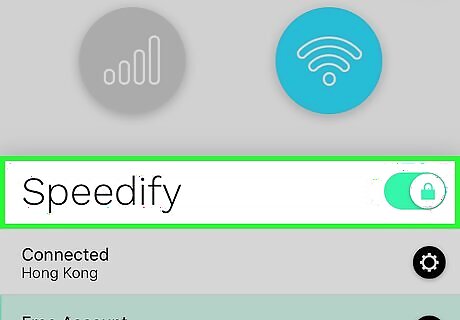
Tap the toggle switch next to "Speedify". This turns on internet bonding for both your wifi and mobile data connection. A free Speedify account allows you to use up to 5GB of data per month. An unlimited plan costs $14.99 a month, or $89.99 a year. If you have another VPN profile active on your device, you will need to go into the Settings menu and search VPN. Then disable your current VPN before turning on Speedify.
Using a Load-Balancing Router
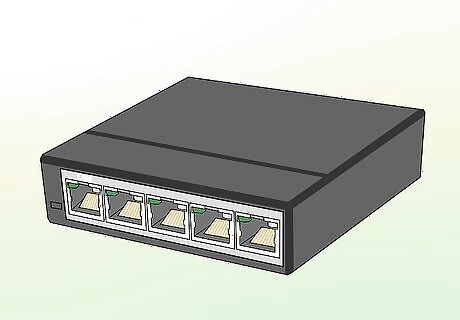
Purchase a load-balancing router. A load-balancing router combines all of your Internet connections into one massive broadcast. You can connect multiple modems with different wireless networks to your load-balancing router in order to process all of the modems' connections. A two-connection load-balancing router will cost you between $40 and $90.
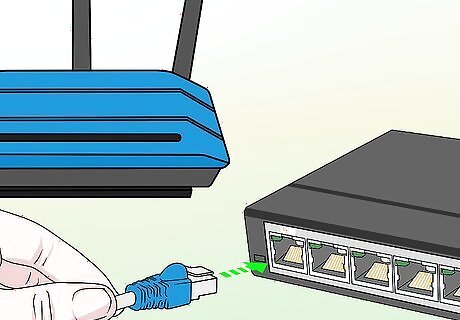
Connect any modems to your router. If you have two or more wireless networks broadcasting from separate modems, you can connect them to your load-balancing router by attaching one end of an Ethernet cable to the square "Internet" port on your selected modem and then connecting the other end to a square port on the back of your router.
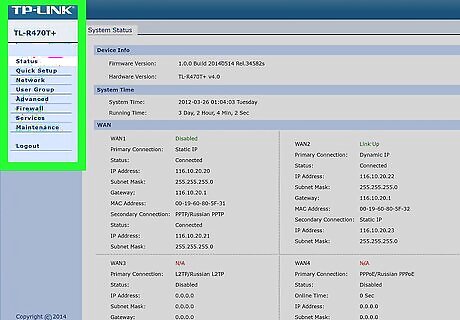
Open the router's configuration page on your computer. You'll do this by entering the IP address for your usual network, which can be found in your connection settings. If connecting to the IP address in your computer's connection settings doesn't lead you to the router's configuration page, check the "Basic Setup" section of your router's manual for the proper address.
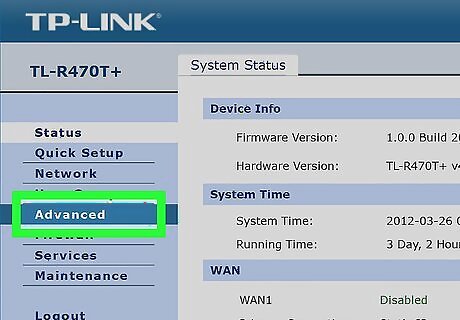
Click Advanced. You'll usually find this tab on the left side of the router's page. Although most load-balancing routers have similar pages, you may see slightly different options in different locations depending on your load-balancing router's manufacturer.
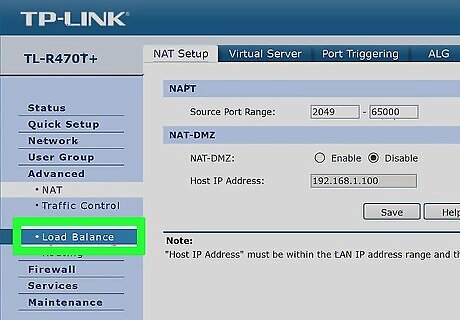
Click Load Balance. Again, you'll usually find this on the left side of the page.
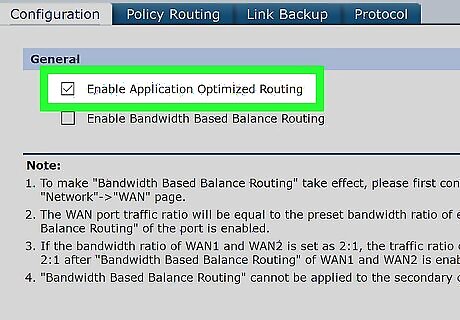
Uncheck the "Enable Application Optimized Routing" box. You'll most likely find this box near the top of the page.
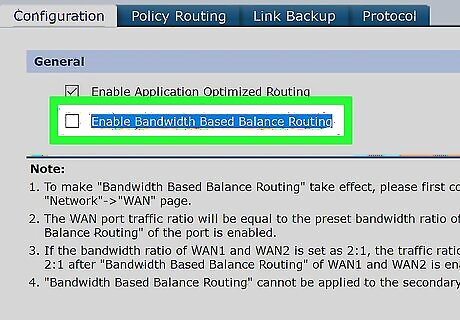
Uncheck the "Enable Bandwidth Based Balance Routing" box. Unchecking this box and the one before it will allow your load-balancing router to distribute your connected Wi-Fi networks in one single connection.
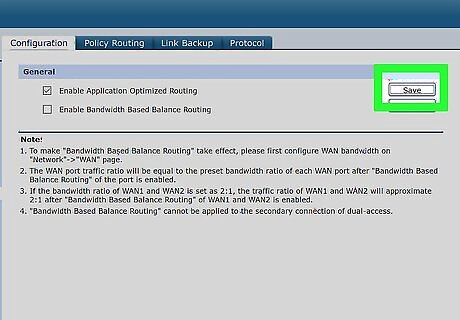
Click OK or Save. Your settings will be saved.
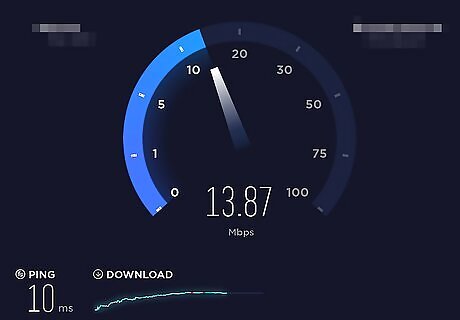
Enjoy your combined connections' speed. If you've completed your load-balancing router setup and your computer is currently connected to the load-balancing router's name in your Wi-Fi menu, you should notice a difference in your browsing speed.
Creating an Aggregate Connection on Mac
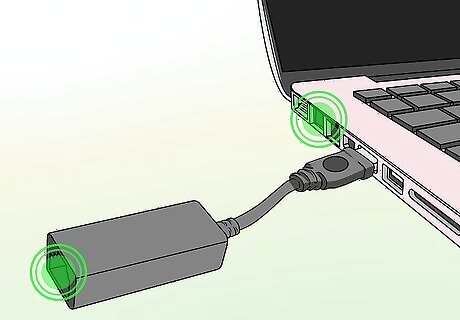
Ensure that you have two Ethernet ports. In order to combine two Internet connections on your Mac without using a special router, you'll need to use an Ethernet connection to each of the connections' routers. This means that your Mac must either have two Ethernet ports or the capability to house an Ethernet adapter: If you have one Ethernet port and at least one USB-C (Thunderbolt 3) port, you can buy an Apple USB-C Ethernet adapter to fill in as the second Ethernet port. If you have no Ethernet port and at least two USB-C (Thunderbolt 3) ports, you can buy two Apple USB-C Ethernet adapters to create the two Ethernet ports. If you have only one USB-C (Thunderbolt 3) port and no Ethernet port, you can't combine two Internet connections via Ethernet. Try using a load-balancing router instead. Since your Mac can only combine two connections which both use 802.3ad-compliant connections, you cannot use a USB 3.0 to Ethernet adapter.
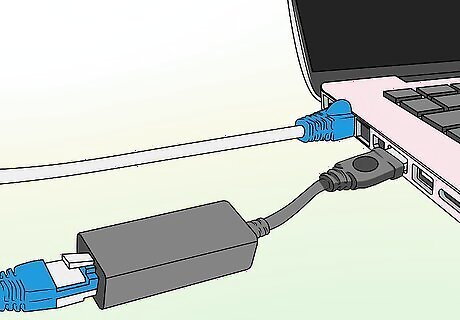
Connect both routers to your Mac. Using an Ethernet cable for each of the two routers, plug one end of each cable into the "LAN" (or similar) port on the back of each router, then plug each of the cables into your Mac's Ethernet ports. You must first connect the Ethernet adapter(s) to your Mac if you don't have more than one Ethernet port.
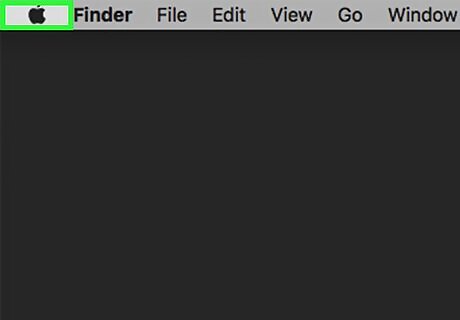
Open the Apple menu Mac Apple. Click the Apple logo in the top-left corner of the screen. A drop-down menu will appear.
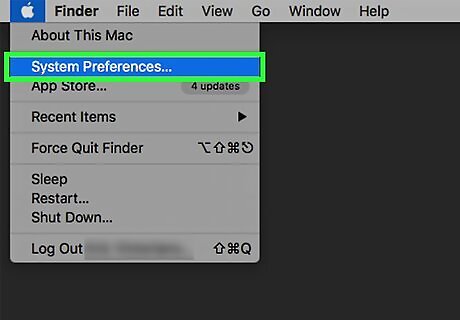
Click System Preferences…. It's near the top of the drop-down menu. Doing so opens the System Preferences window.
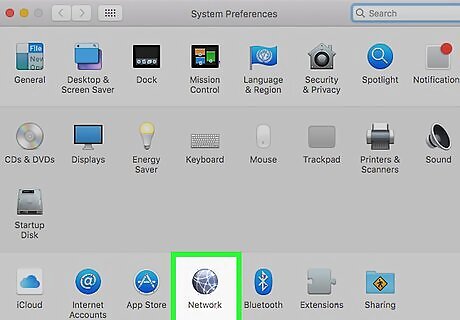
Click Network. You'll find this globe-shaped icon in the System Preferences window. Clicking it opens the Network window.
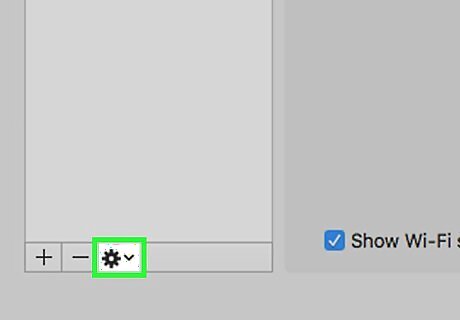
Click the gear-shaped "Action" icon. It's in the lower-left side of the window. A pop-up menu will appear.
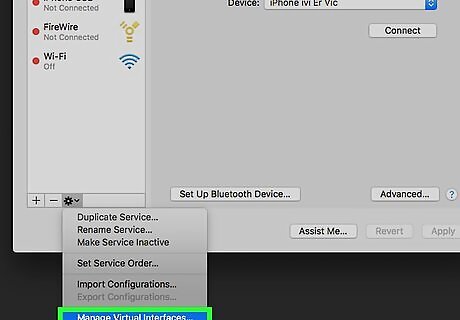
Click Manage Virtual Interfaces…. This option is in the "Action" pop-up menu. A new window will open.
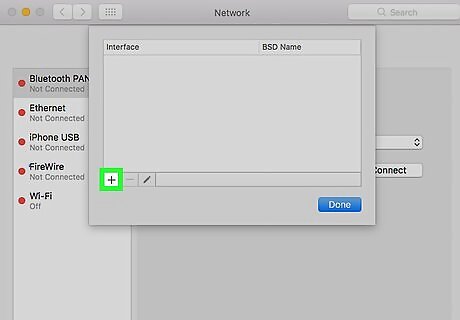
Click +. It's in the lower-left side of the new window. Clicking it prompts a drop-down menu.
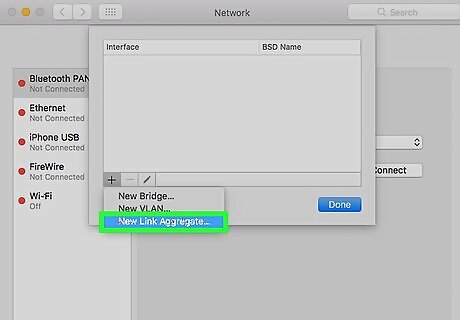
Click New Link Aggregate…. This option is in the drop-down menu.
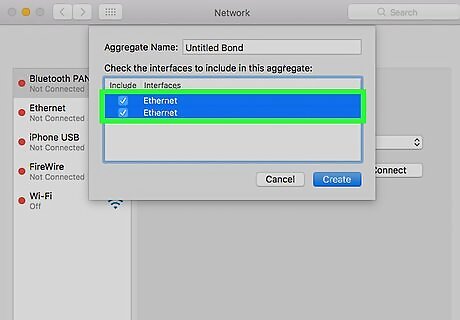
Select your Ethernet ports. Click the checkbox to the left of each of the Ethernet connections.
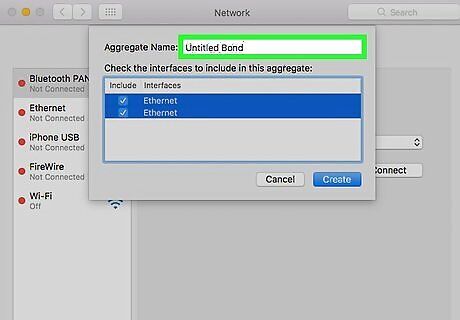
Enter a name. Type a name for your new connection into the text box at the top of the window.
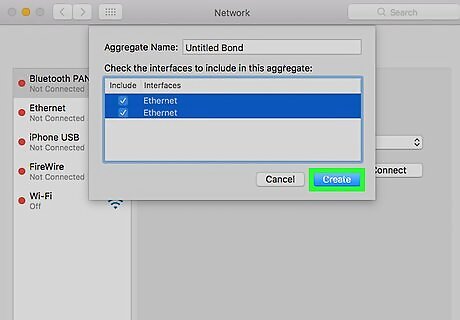
Click Create, then click Apply. This will both create your combined Internet connection and connect to it. Your Mac should now automatically split things like download speed and streaming between the two connections.




















Comments
0 comment